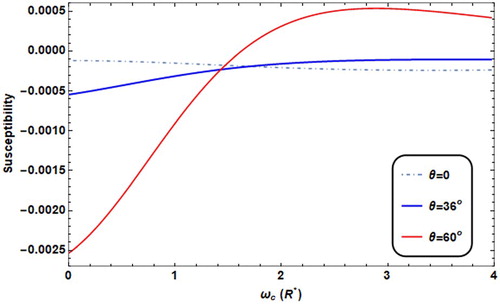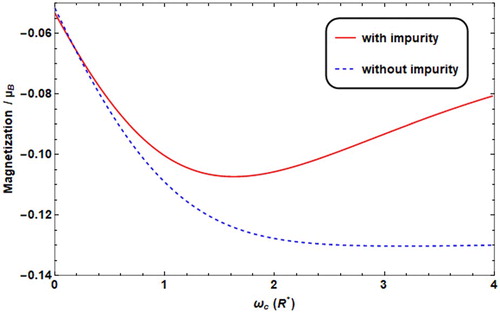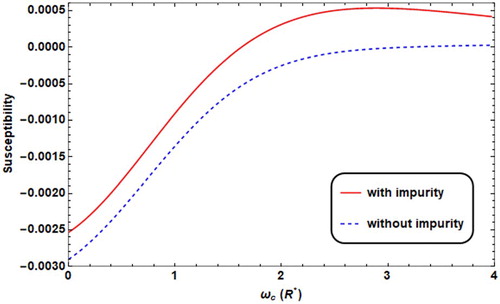Figures & data
Figure 1. Ground state energy versus no. of basis for different values of F andω0, T = 0.1 K, θ = 60°.
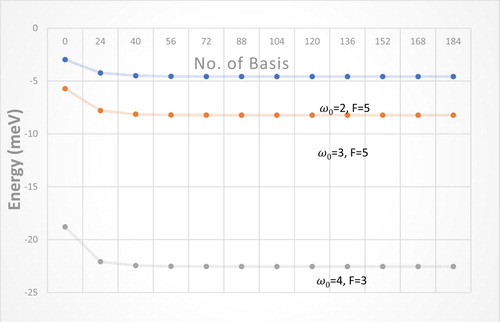
Table 1. The values of the Ground state energy and the number of basis involved in the diagonalization process, for different values of F and ω0.
Figure 2. Statistical energy against ωc for different values of F (F = 4.8R* for solid line, = 7R* for dashed line), ω0 = 2R*, T = 0.01 K, θ = 60°.
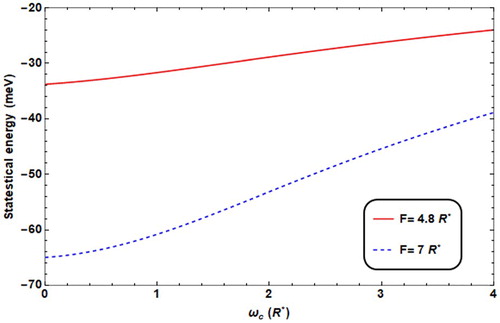
Figure 3. Statistical energy against ωc for different values of T (T = 0.01 K for solid line, =10 K for dashed line), ω0 = 2R*, F = 4.8R*, θ = 60°.
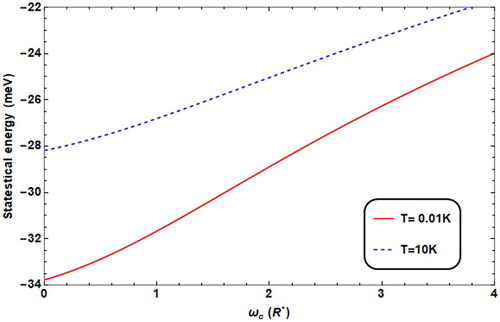
Figure 4. Statistical energy against ωc for different values of ω0 (ω0 = 2R* for solid line, = 2.5R* for dashed line, = 1.5R* for dot dashed), T = 0.01 K, F = 4.8R*, θ = 60°.
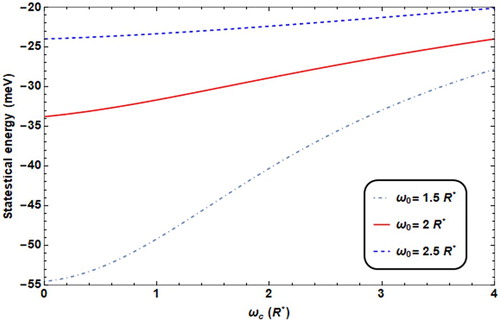
Figure 5. Statistical energy against ωc for different values of θ (θ = 60° for solid line, =36° for thick line, = 0 for dot dashed line), ω0 = 2R*, F = 4.8R*, T = 0.01 K.
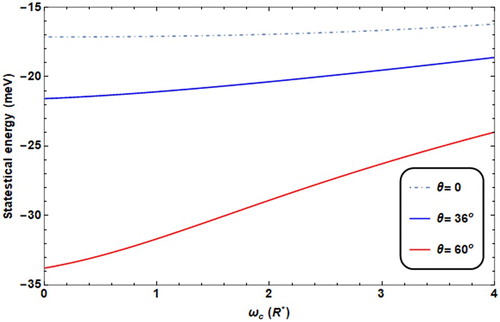
Figure 6. Statistical energy against ωc with (dashed line)/without (solid line) impurity, ω0 = 2R*, F = 4.8 K, θ = 60°, T = 0.01 K.
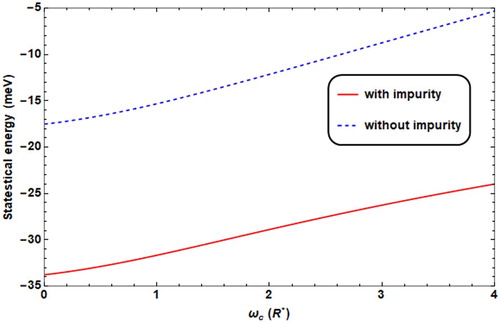
Figure 7. Magnetization versus ωc with different F values (F = 4.8R* for solid line, = 7R* for dashed line), with ω0 = 2R*, T = 0.01 K, θ = 60°.
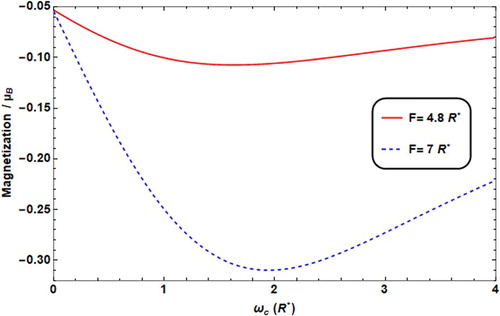
Figure 8. Susceptibility versus ωc with different F values (F = 4.8R* for solid line, = 7R* for dashed line), with w0 = 2R*, T = 0.01 K, θ = 60°.
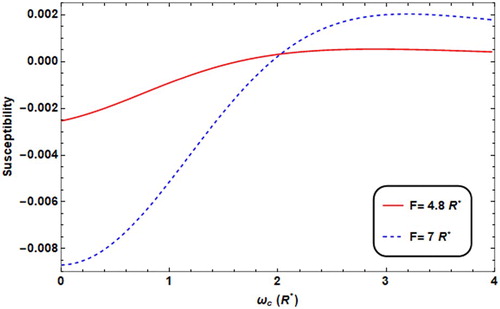
Figure 9. Magnetization versus ωc with different T values (T = 0.01 K for solid line, = 10K* for dashed line) with ω0 = 2R*, F = 4.8R*, θ = 60°.
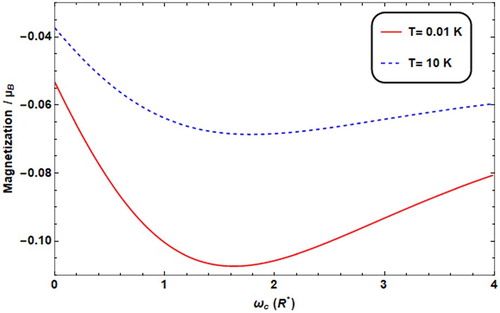
Figure 10. Susceptibility versus ωc with different T values (T = 0.01 K for solid line, = 10K* for dashed line) with ω0 = 2R*, F = 4.8R*, θ = 60°.
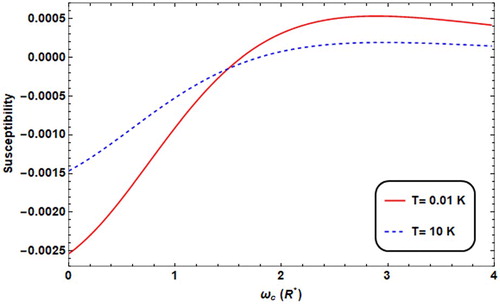
Figure 11. Magnetization versus ωc with different ω0 values (ω0 = 2R* for solid line, = 2.5R* for dashed line, = 1.5R* for dot dashed) with T = 0.01 K, F = 4.8R*, θ = 60°.
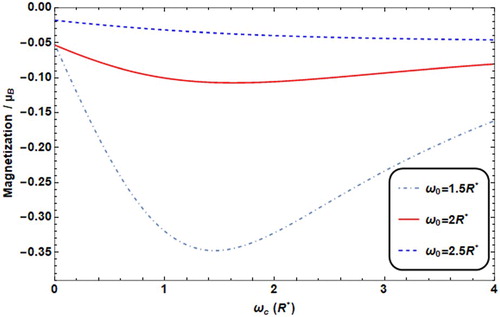
Figure 12. Susceptibility versus ωc with different ω0 values (ω0 = 2R* for solid line, = 2.5R* for dashed line, = 1.5R* for dot dashed) with T = 0.01 K, F = 4.8R*, θ = 60°.
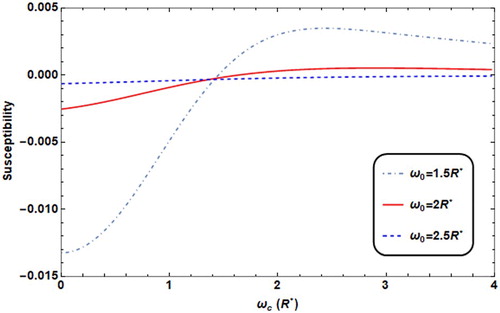
Figure 13. Magnetization versus ωc with different θ values (θ = 60° for solid line, = 36° for thick line, = 0° for dot dashed) with T = 0.01 K, F = 4.8R*, ω0 = 2R*.
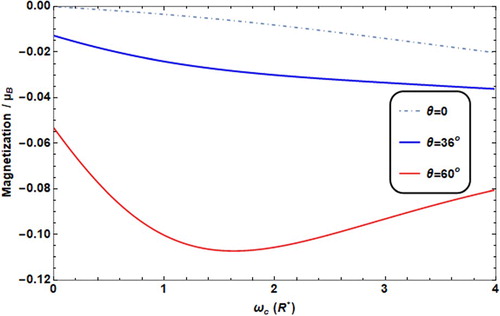
Figure 14. Susceptibility versus ωc with different θ values (θ = 60° for solid line, = 36° for thick line, = 0° for dot dashed) with T = 0.01 K, F = 4.8R*, ω0 = 2R*.
